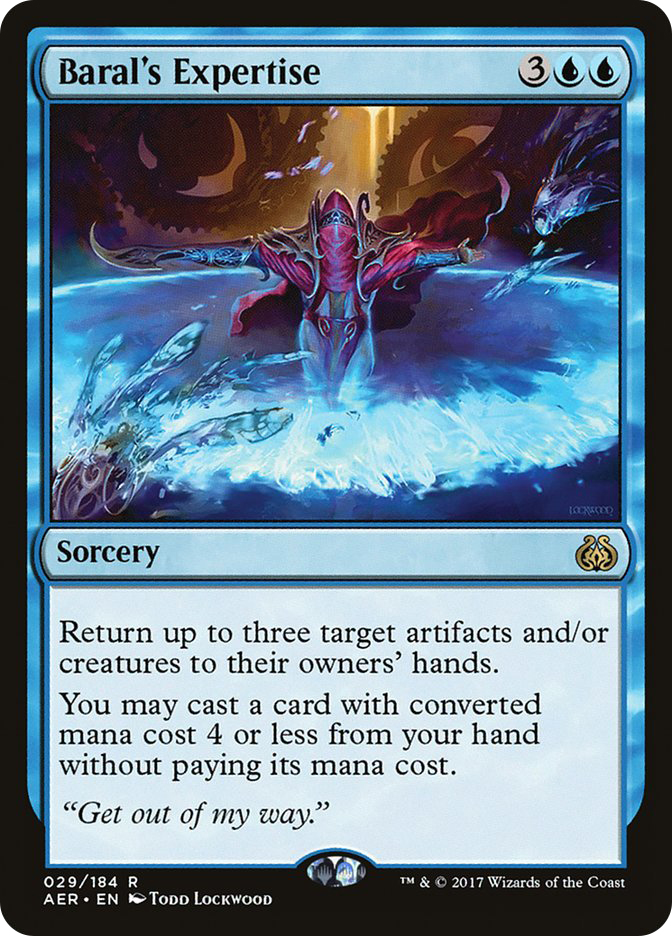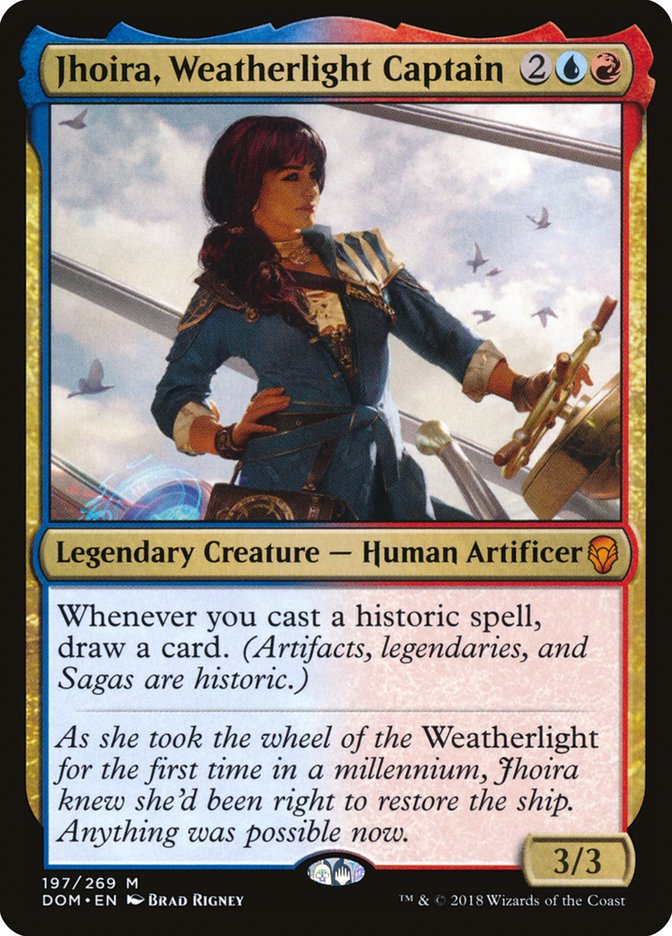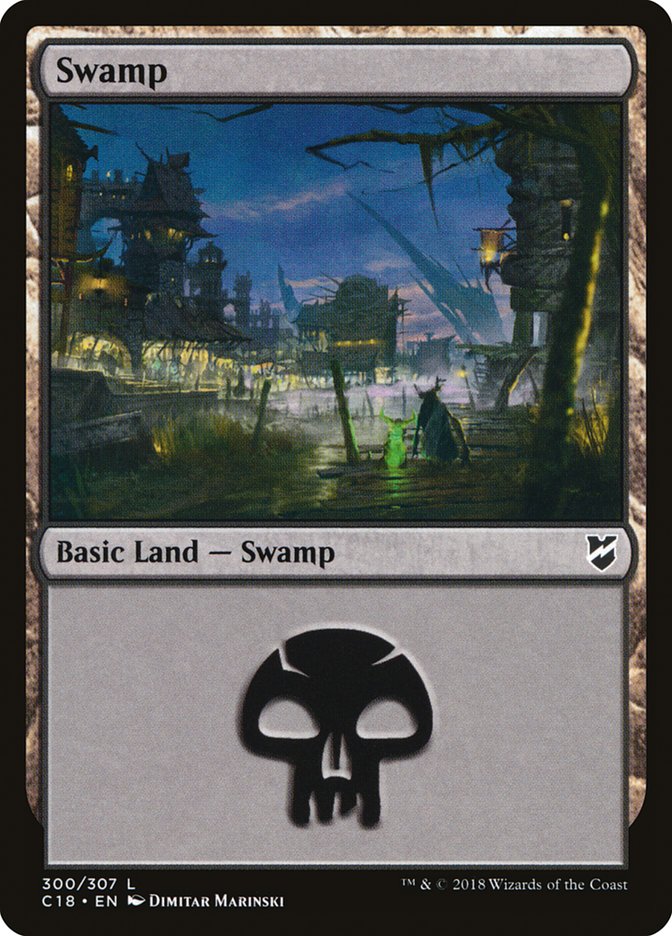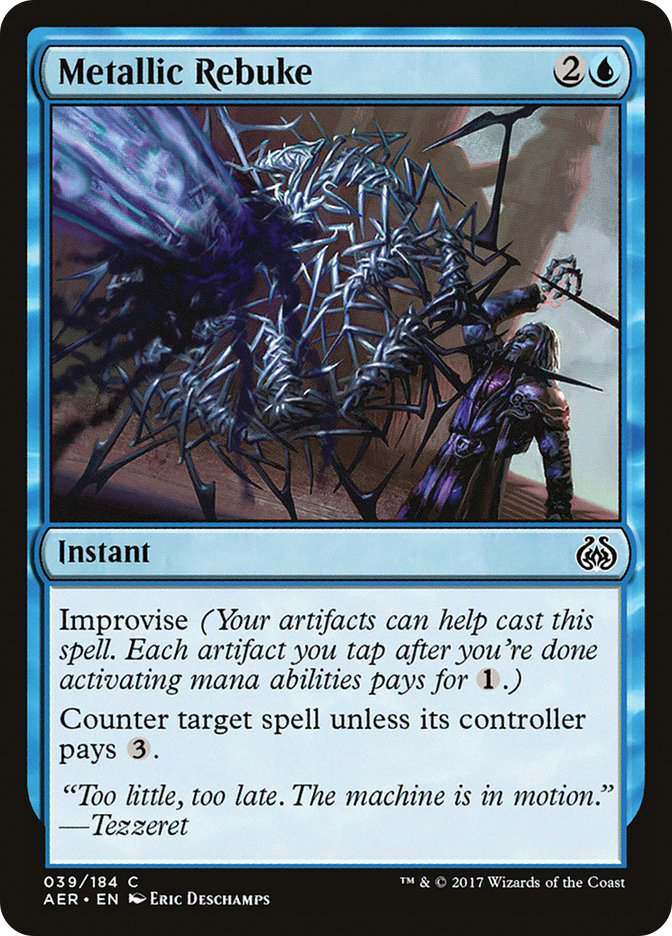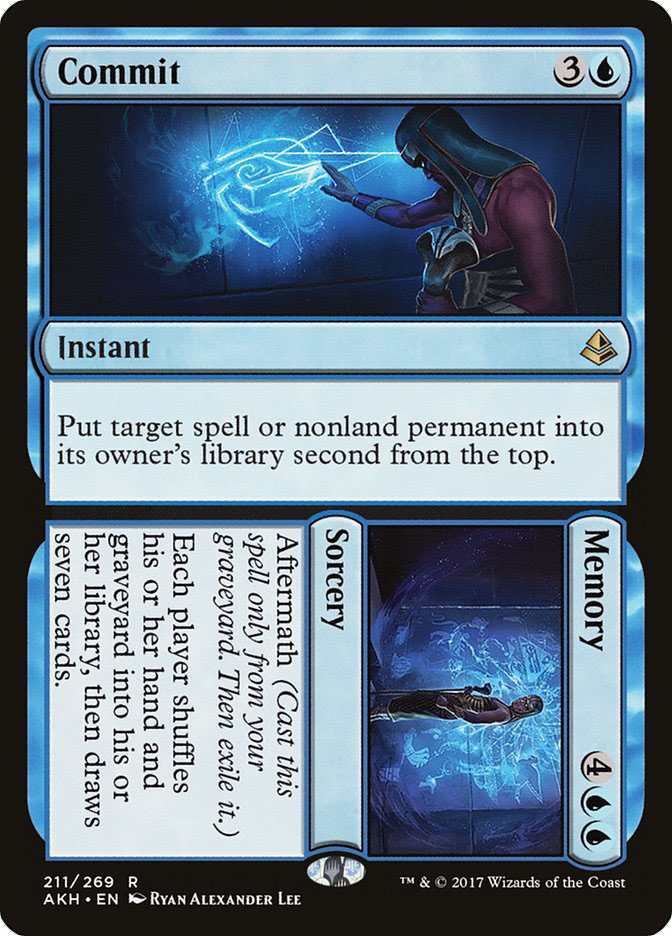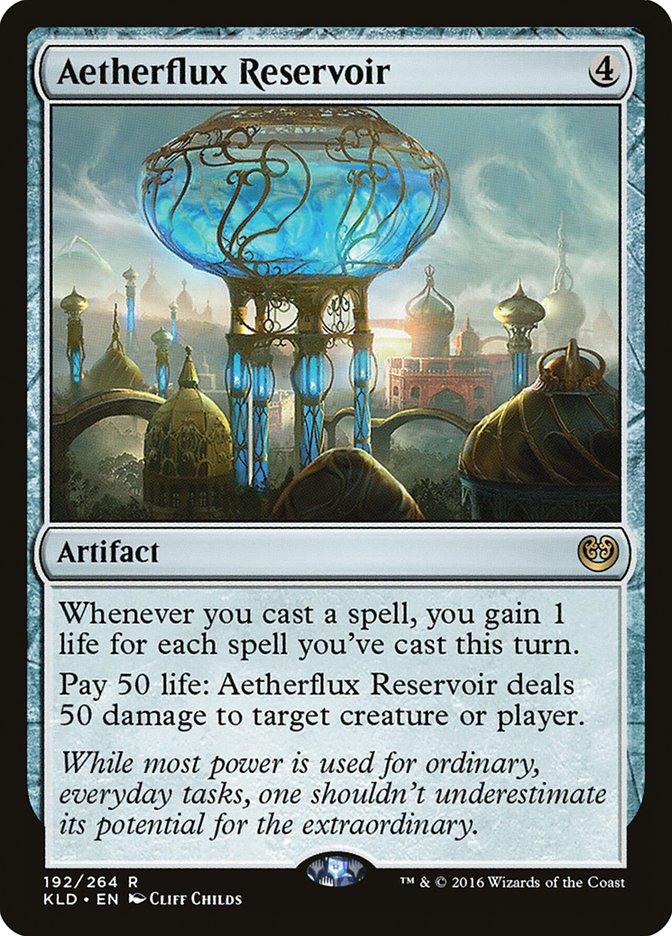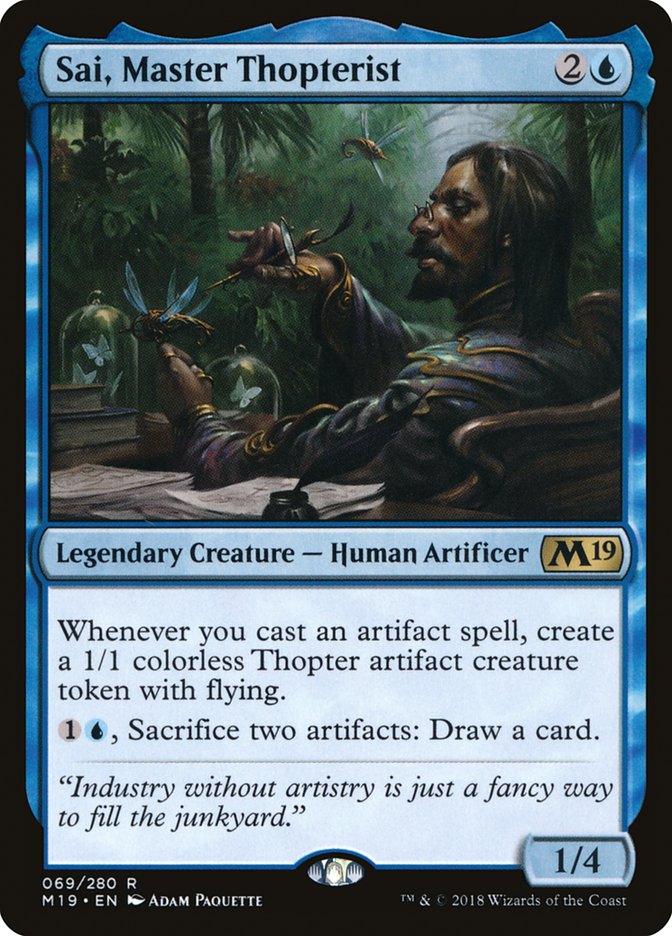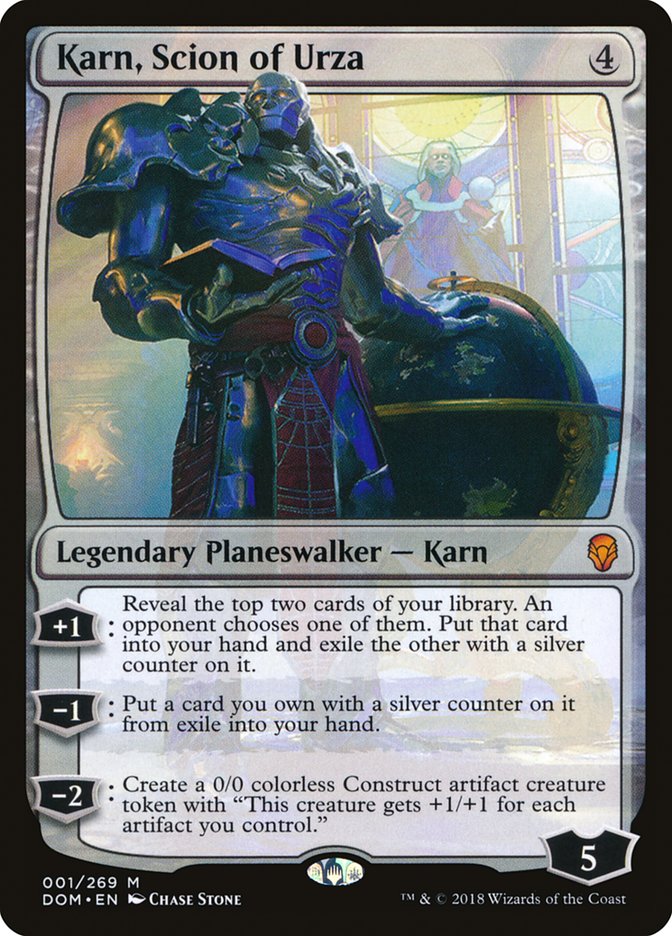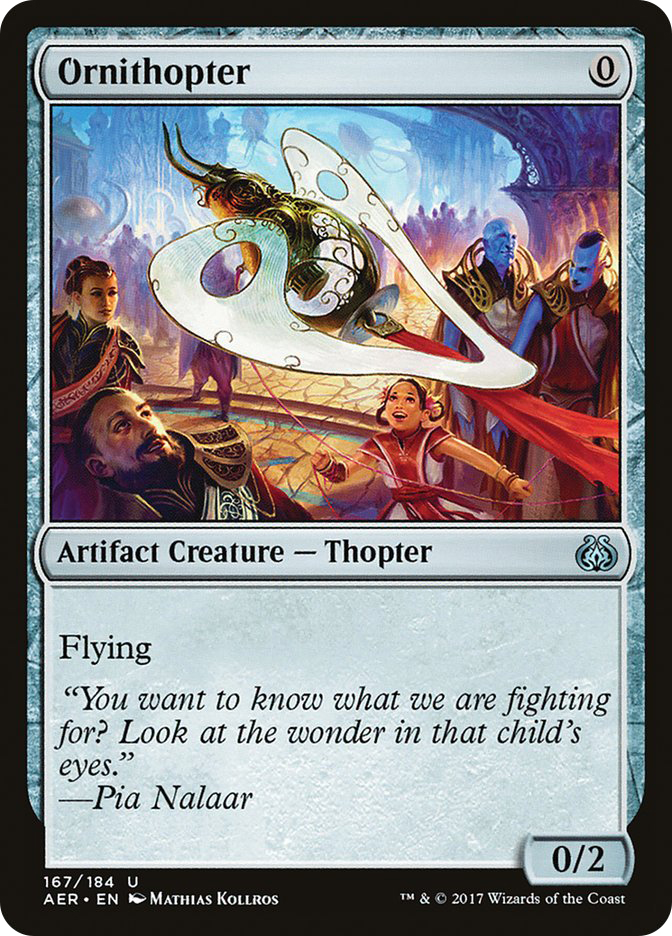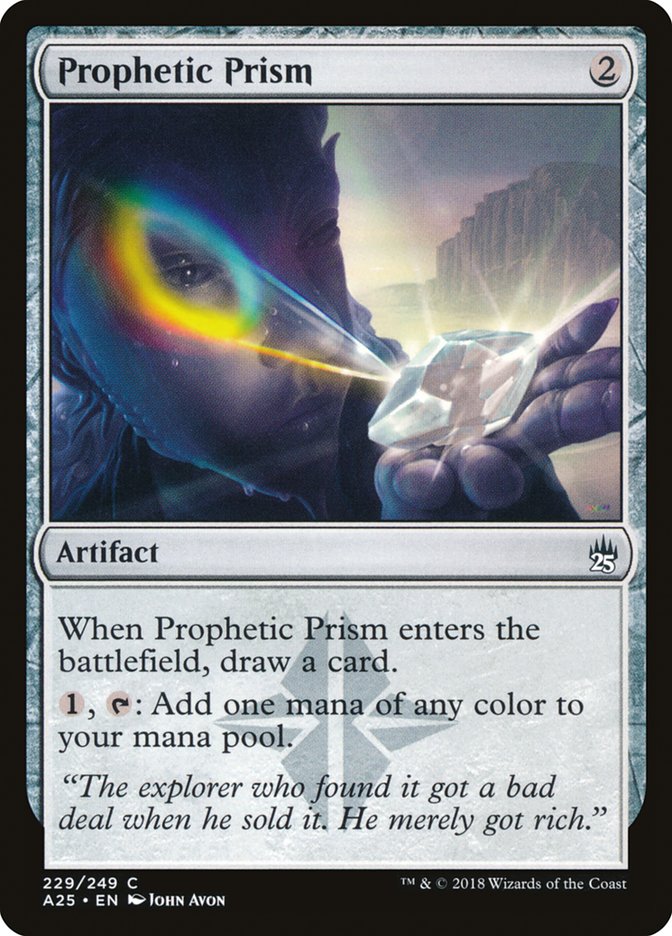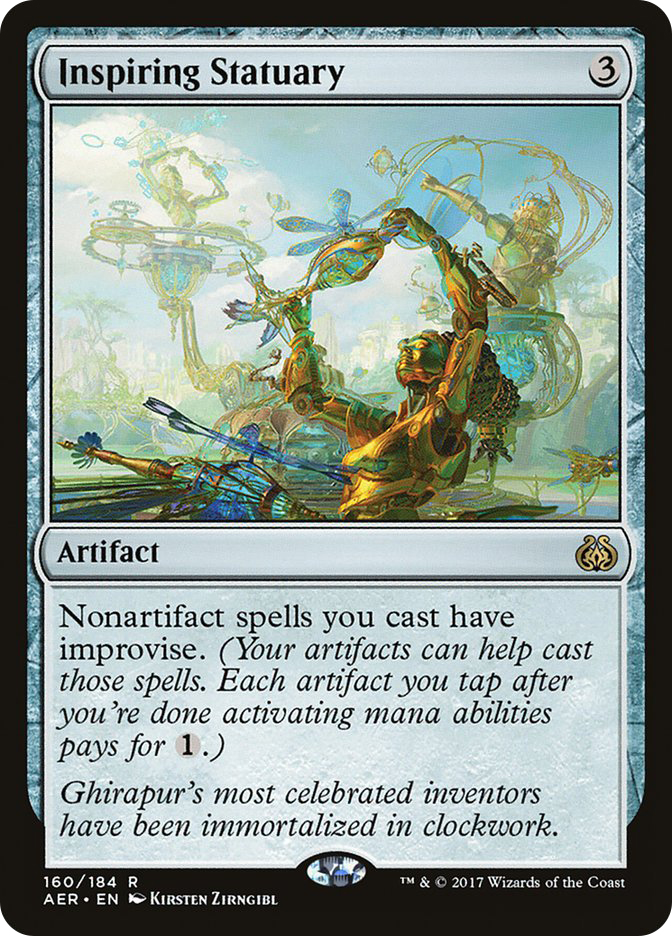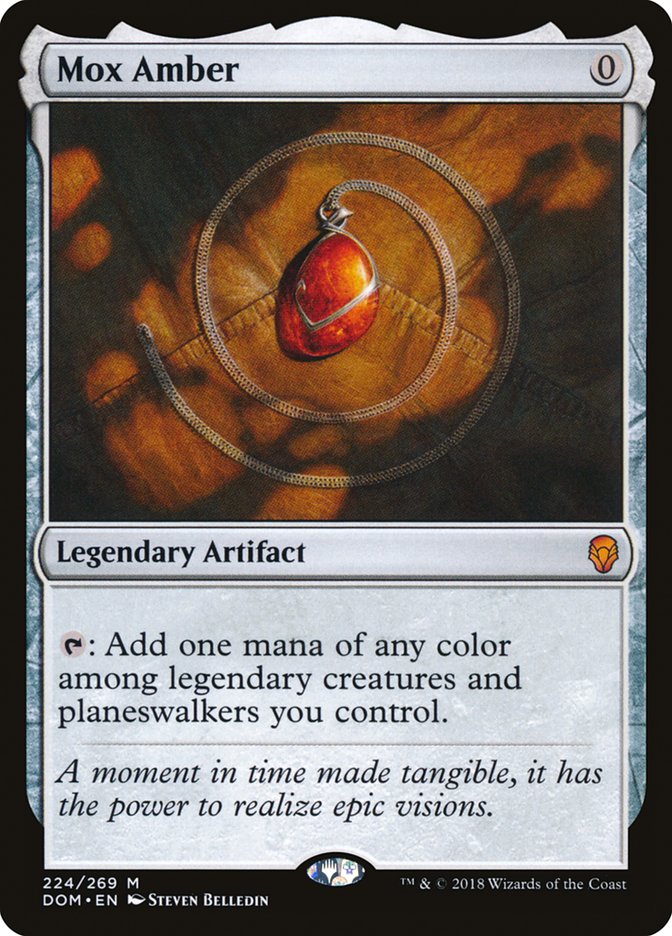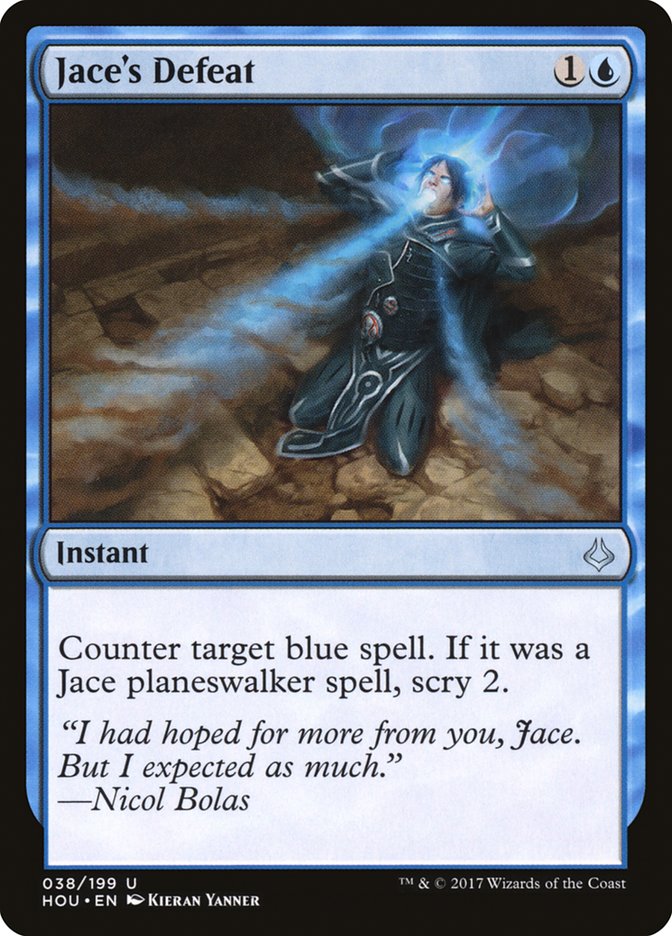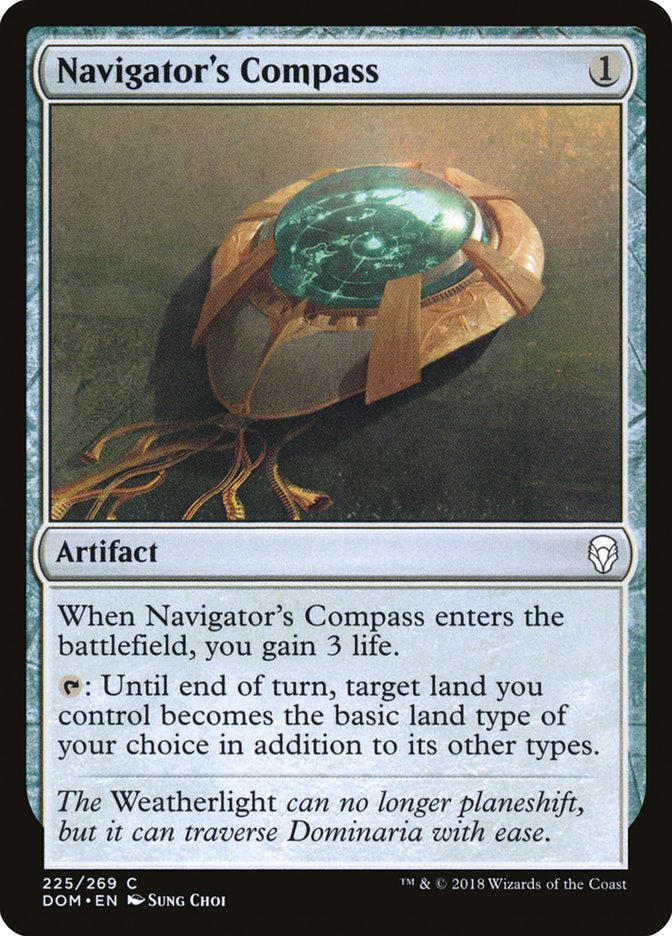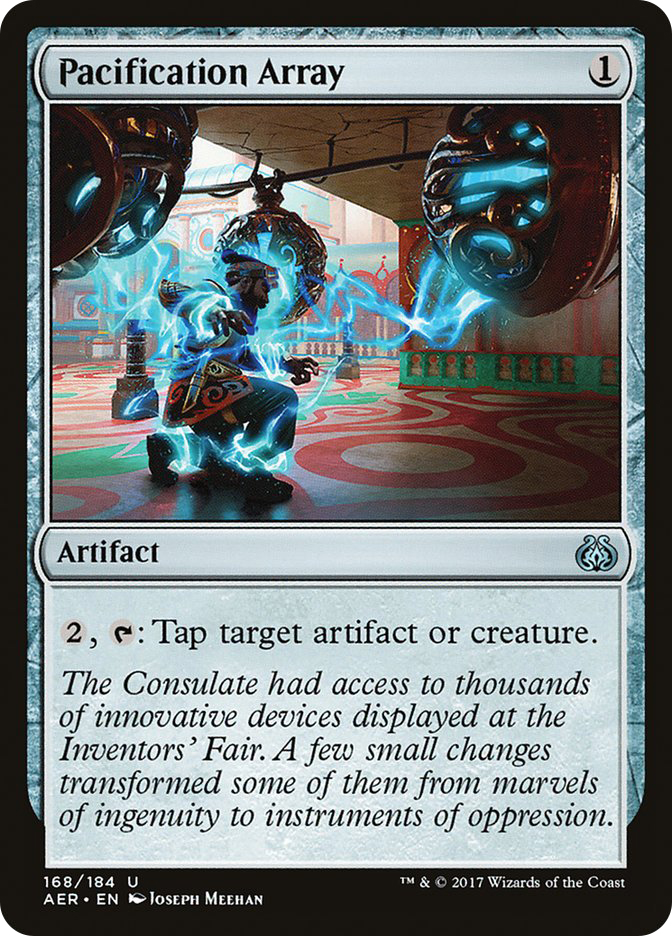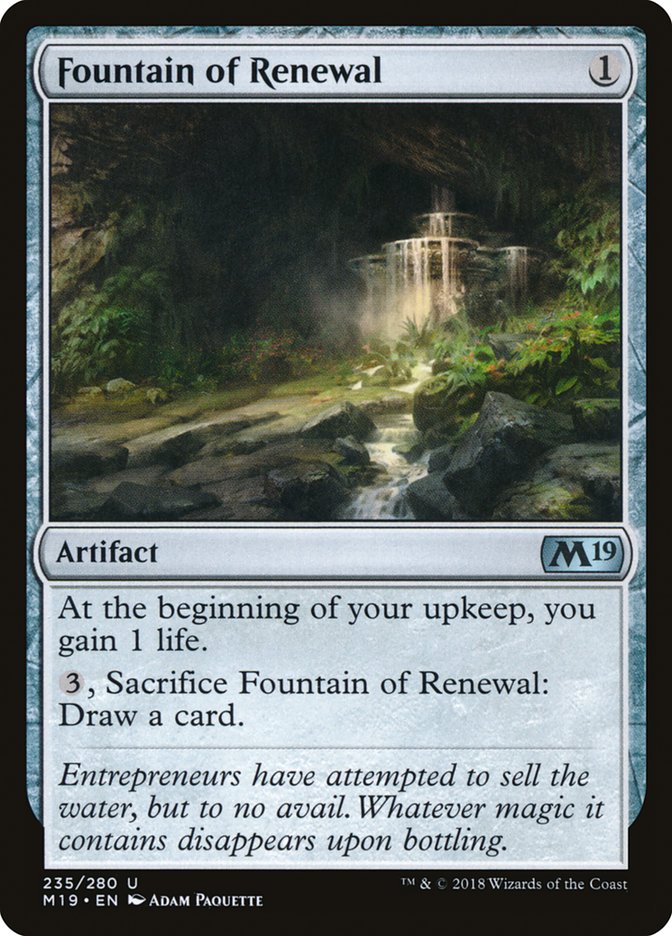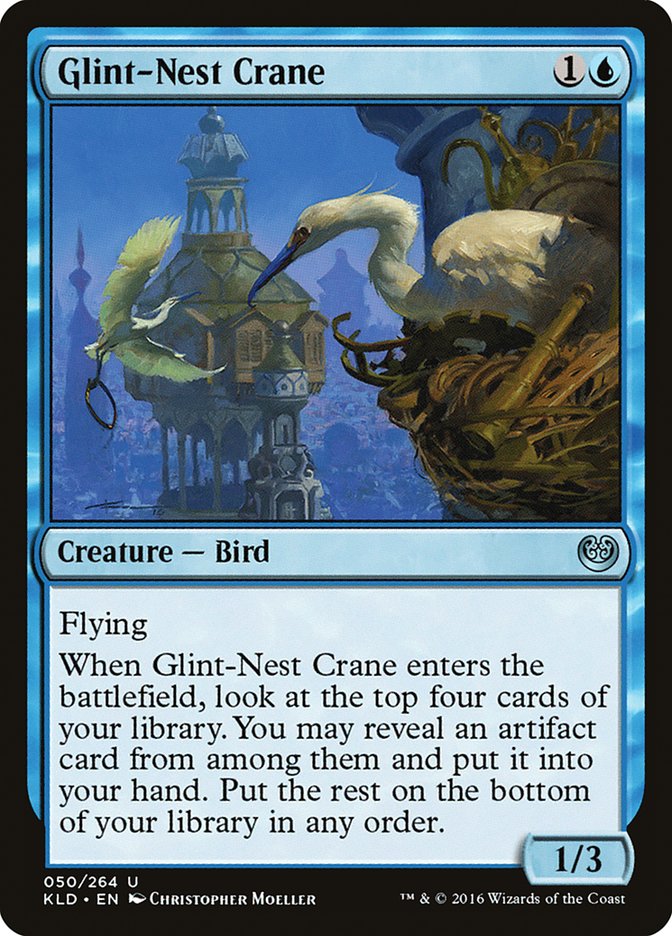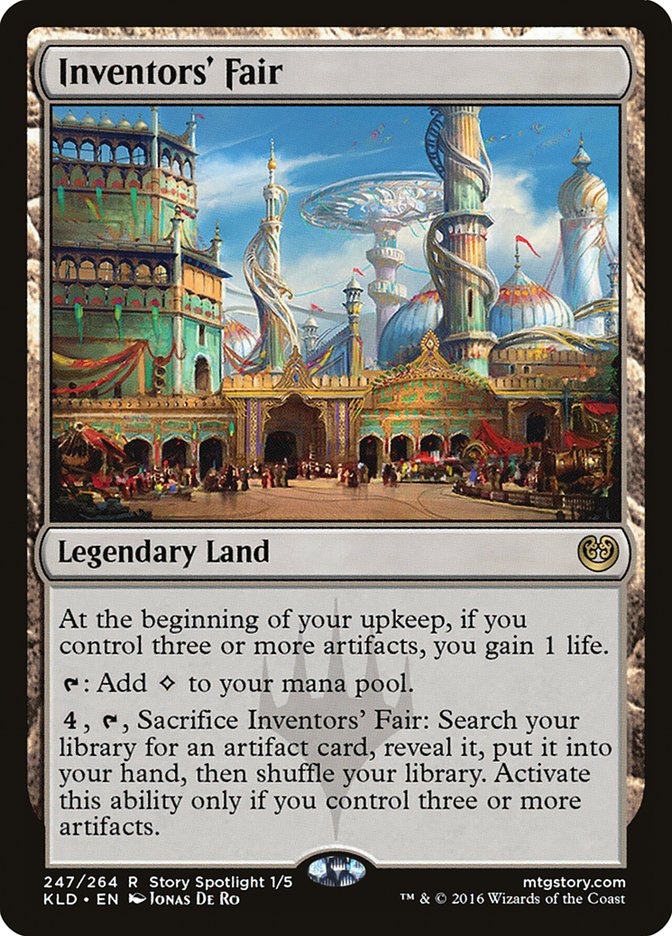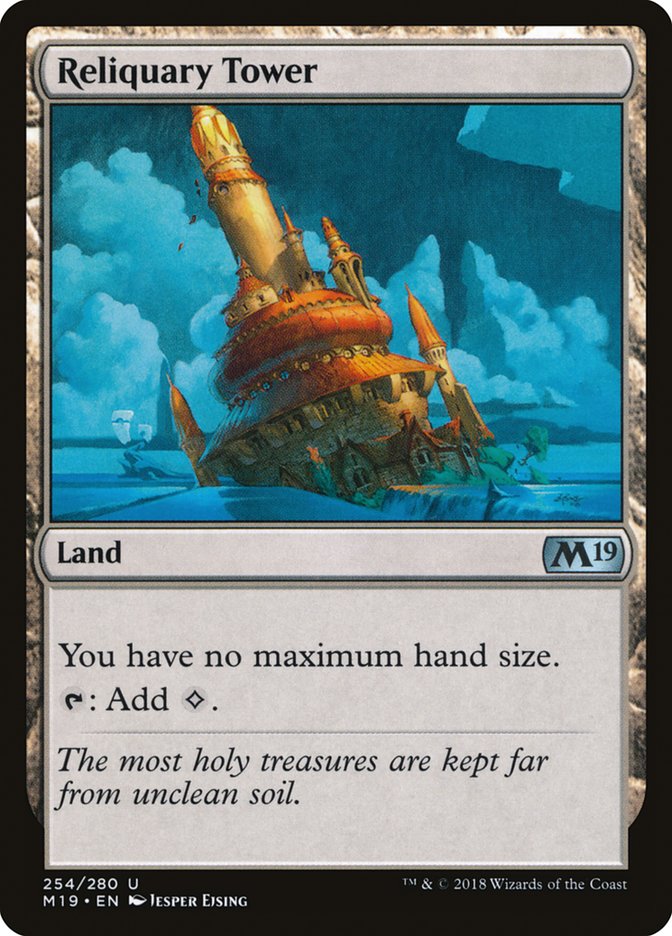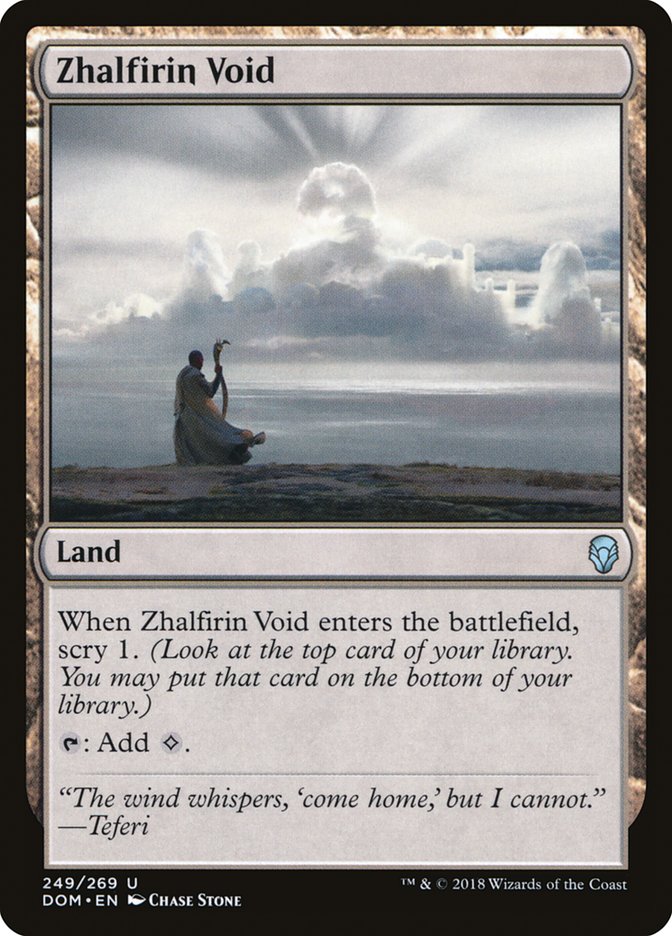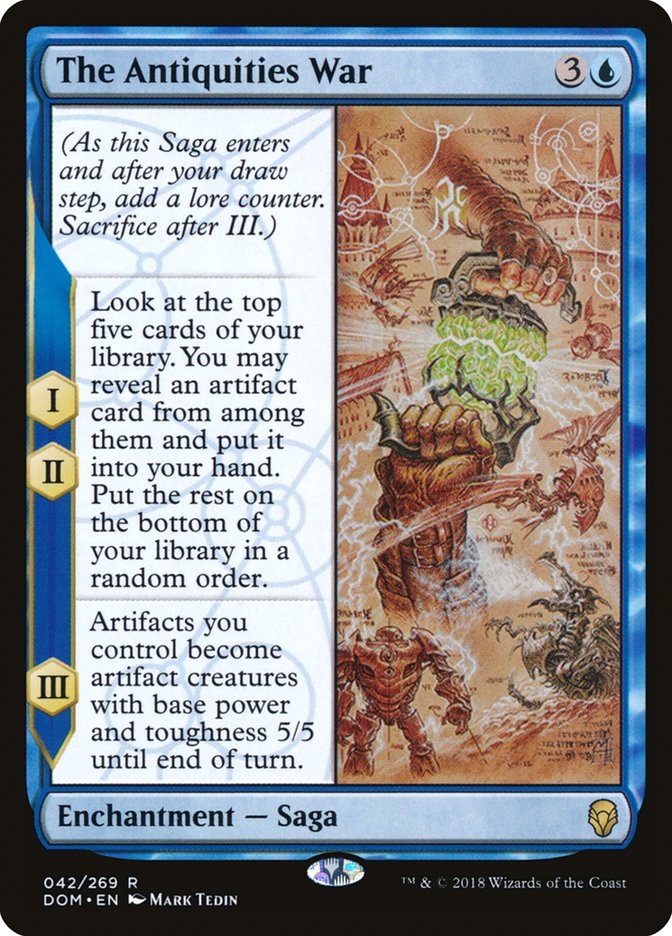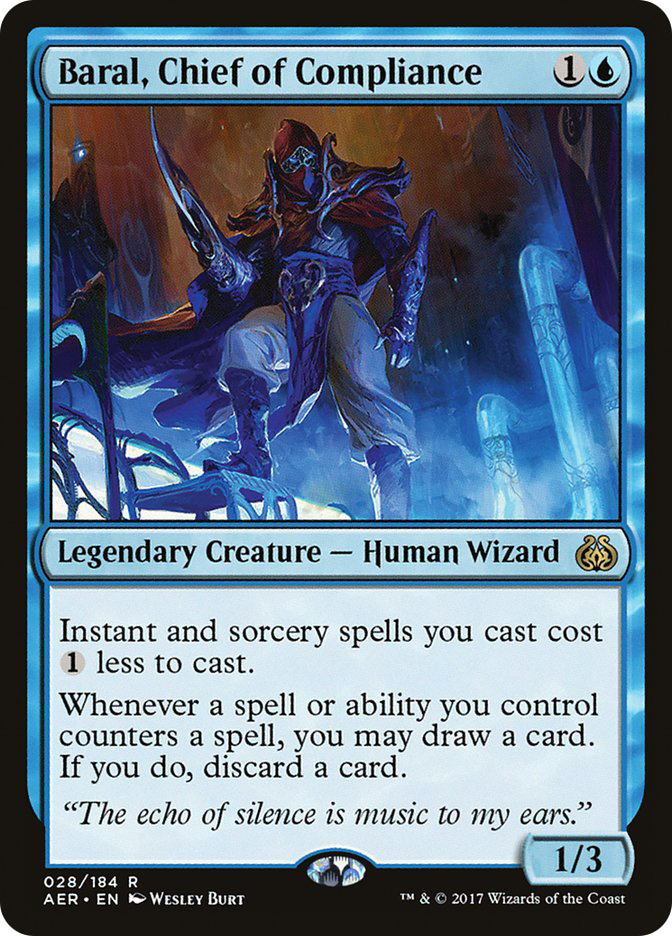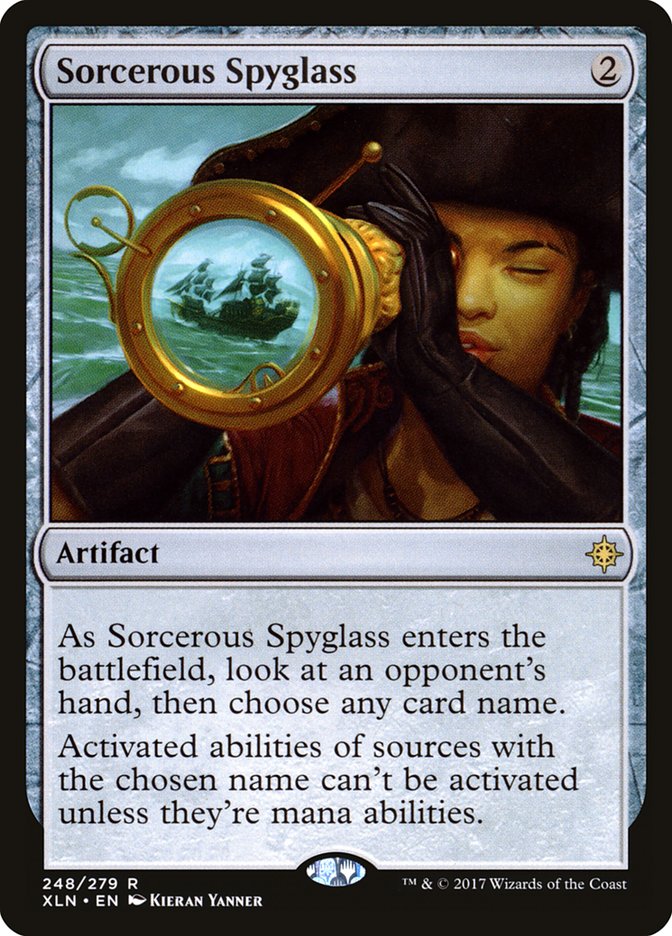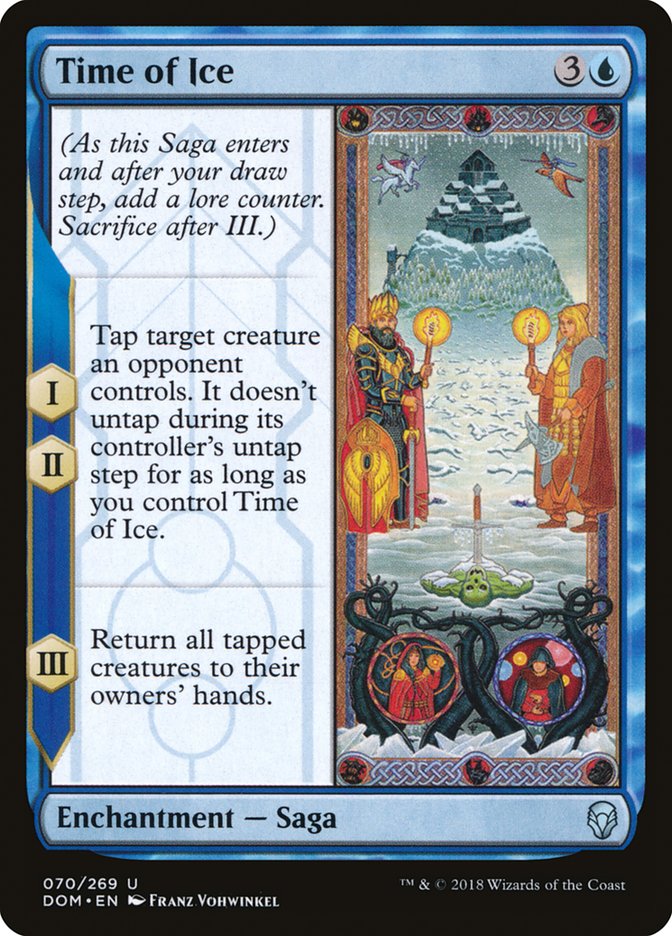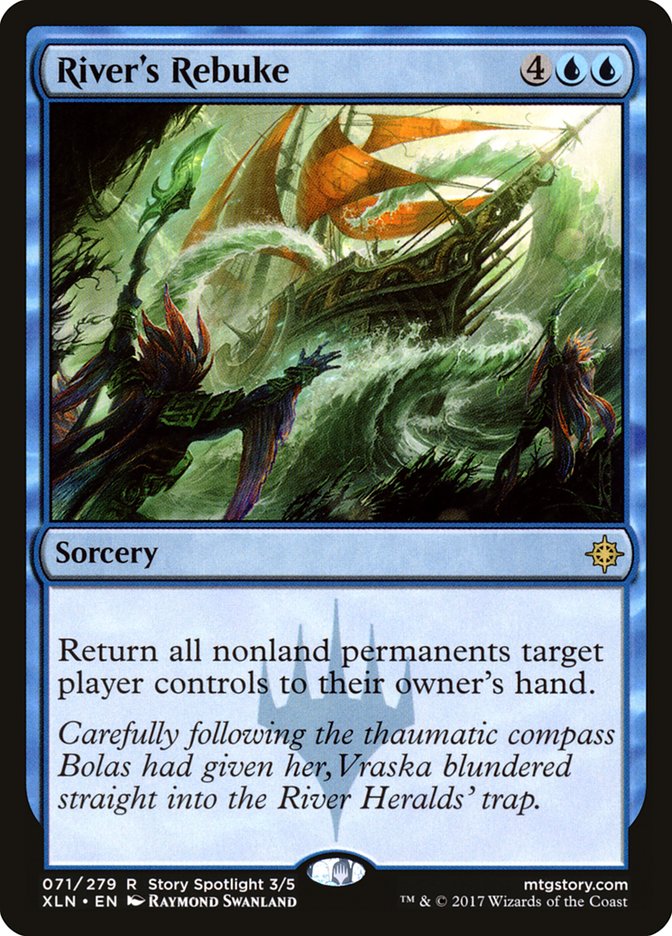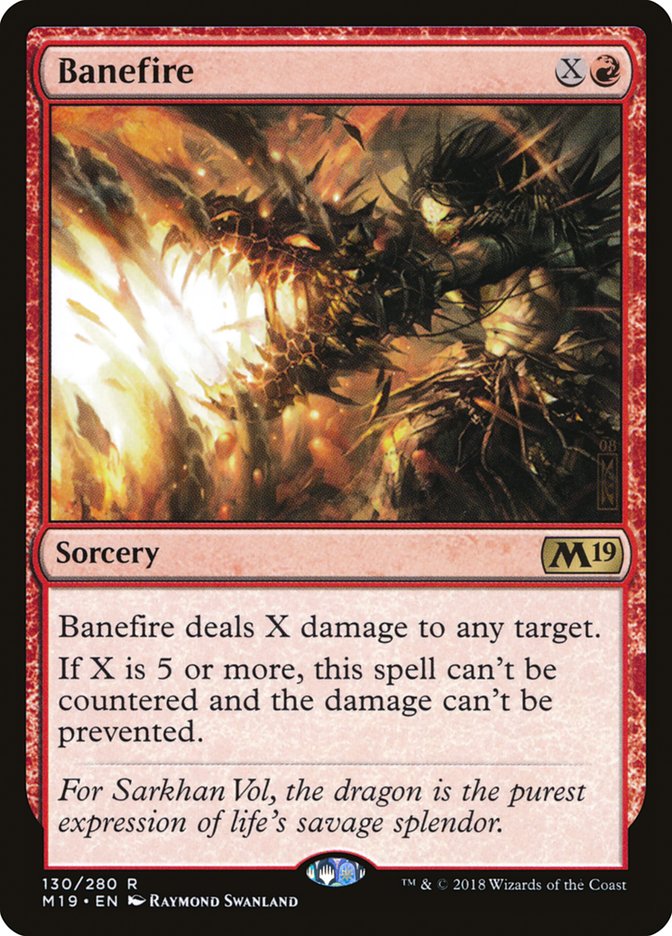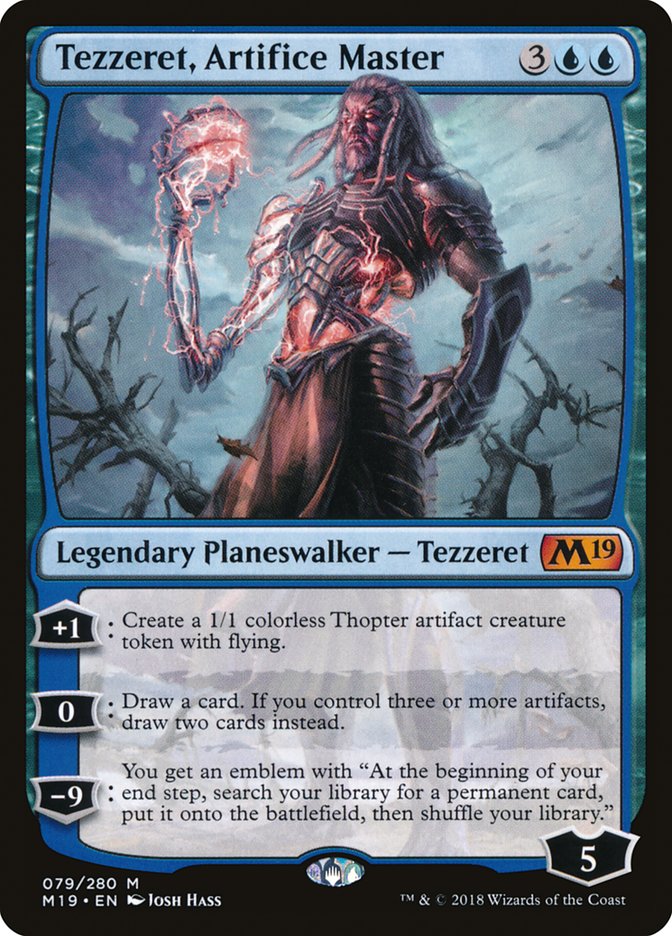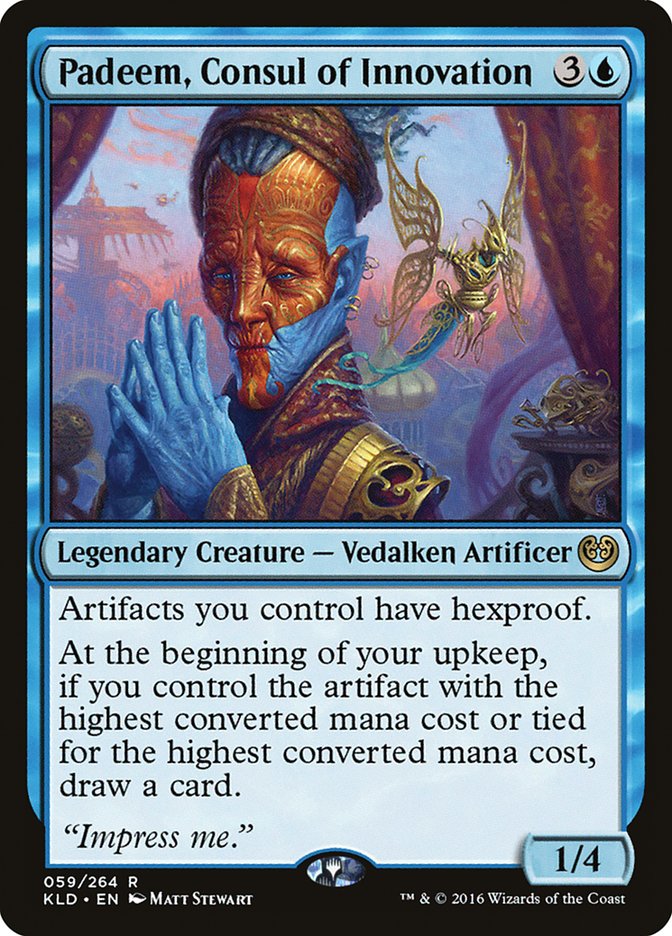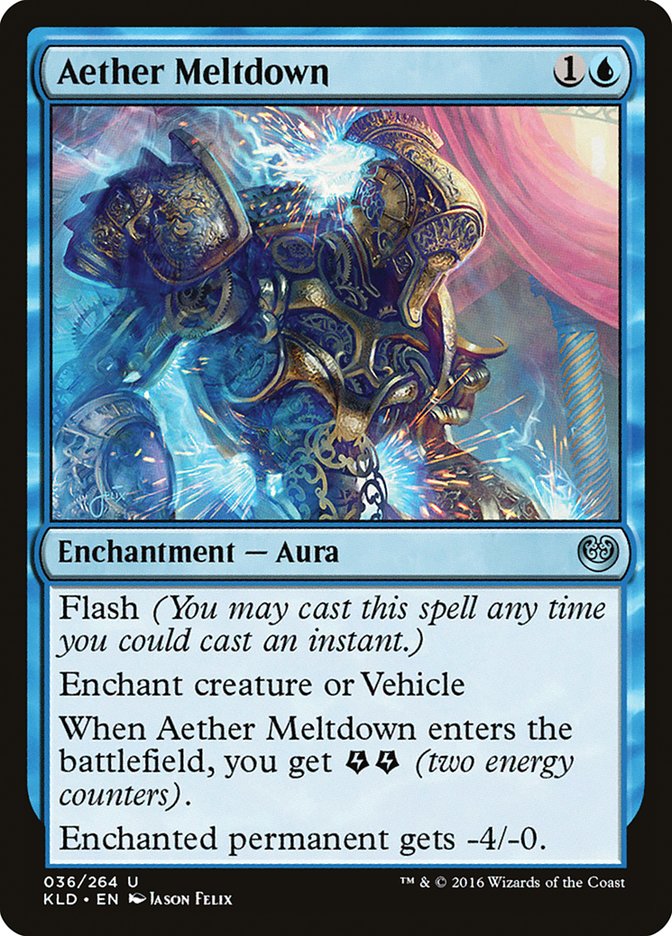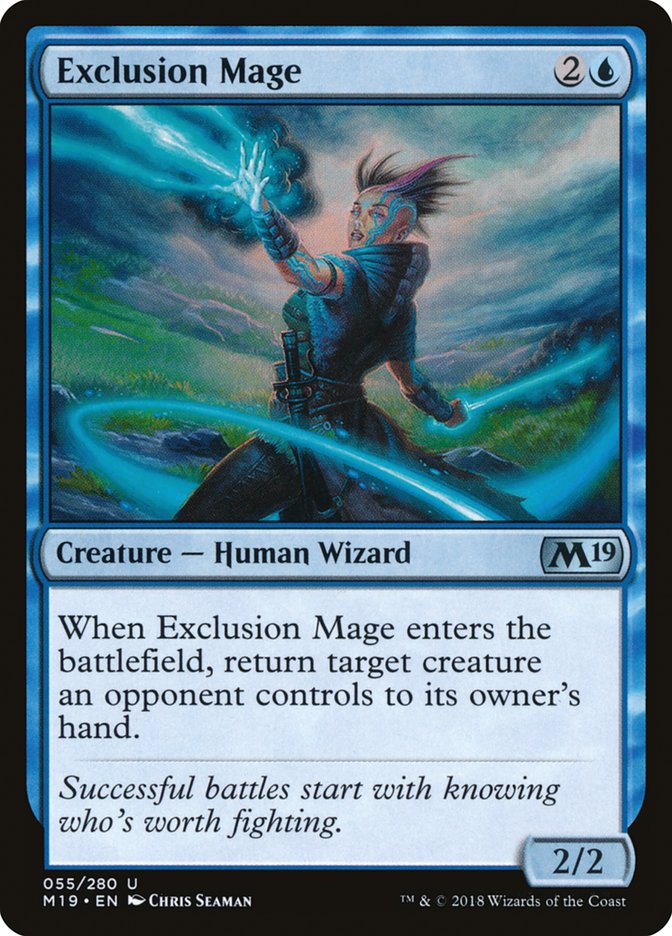What’s the best you’ve ever felt about a deck?
It finally happened. I played a deck that was so confusing and
busted-feeling that I decided to book a flight to a Grand
Prix.— Emma Handy, Didnygorl (@Em_TeeGee) July
27, 2018
A few weeks ago, I felt “buy an airline ticket and pay to enter a Grand
Prix I was planning to skip” good about a deck and it was entirely an
accident. One of the best parts of having a Magic Online account is the
ability to just play whatever Magic deck you want, whenever you want,
without having to deal with driving across town to a game store, buying new
sleeves, and all the other things that discourage us from trying out some
off-the-wall thing we saw online.
Something like this:
Creatures (8)
Lands (18)
Spells (34)

With the deck showing up at the Pro Tour recently and Sam Black
writing an article
about the archetype, it’s become a bit more known since Luke put up this
result, but at the time of Luke’s finish, I went through my four stages of
odd deck selection:
- What the hell?
- How does this deck win games?
- I must try it.
- I must learn everything about this.
After committing to the deck early, I had the luxury of trying out every
single card I could think of for the deck. The deck itself can be built in
a few different ways, based on the primary gameplan of the deck:
Traditional Combo
The most basic breakdown of the two ways to build the deck are leaning into
the combo and trying to play a mana-cheating value deck. The deck
originally came to exist as an Aetherflux Reservoir combo deck, and we’ll
follow the same path when examining takes on the deck.
Creatures (8)
Planeswalkers (4)
Lands (18)
Spells (30)

This version of the deck plans to win with Aetherflux Reservoir, and game
wins coming from Thopter and Construct tokens are just icing on the cake.
The easiest way to tell this version apart from a more value-oriented slant
is by looking at the counts on Baral’s Expertise and Aetherflux Reservoir.
Baral’s Expertise is secretly one of the most important cards in the deck
for a couple of reasons. The most obvious one is that it’s the way to put
Aetherflux Reservoir on the battlefield while only having to tap two “true”
mana sources–with the help of Inspiring Statuary, of course.
The other, more subtle reason is that it can return one’s own permanents to
the hand, effectively buying additional spells to cast in the name of
bolstering one’s own storm and Thopter counts.
There’s another take on the deck that leans even further into the combo
side of things, incorporating Jhoira, Weatherlight Captain:
Creatures (12)
Lands (19)
Spells (29)

No Karns in the maindeck is a big clue as to what the deck is trying to do.
Something’s gotta give to make room for Jhoira, and the idea is that most
decks won’t be configured to fight what the deck is doing before
sideboarding.
What Jhoira does for the deck is that she allows the deck to have more
unique cards, as opposed to shooting for hyper-redundancy. Only two copies
of Baral’s Expertise are necessary because the deck sees so much more of
its deck every game. Getting away with playing a single copy of Navigator’s
Compass is easy when the single copy can have such a huge impact against an
aggro deck with Paradoxical Outcome’s help, and even if it isn’t good in
the matchup, Jhoira ensures that it’s at least going to be worth a random
card off the top.
After sideboard, the Karns are easy to bring in where necessary, but this
version of the deck is going to be much better against something like
Mono-Green Aggro, where racing is the name of the game.
Karn Value
The other side of the Paradoxical Outcome camp tends to lean further from
the combo, playing the deck as an engine-based value deck, looking to
overwhelm the battlefield by clogging it with permanents and colossal
creatures.
I leaned pretty far into this for Grand Prix Orlando last weekend, as
evidenced by the specifics of my list:
Creatures (8)
Planeswalkers (3)
Lands (19)
Spells (30)

There are subtleties in the deck that show it’s planning to play for more
turns than most lists, and that’s what sets it apart from other versions of
the deck.
A basic Swamp is fairly uncommon in the deck, but when the primary gameplan
involves several untap steps while killing the opponent, Metalspinner’s
Puzzleknot is frequently doing its best Think Twice impression, even when
Prophetic Prism hasn’t been found.
In the more combo-oriented versions of the deck, counterspells are a lower
priority, largely in part because they don’t fuel the combo itself, and
drawing multiple counterspells is either going to effectively count as
drawing some number of blanks, or giving an opponent the time required to
cast spells worth countering.
Aetherflux Reservoir tends to make up zero to one copies of cards in the 75
of value-oriented builds, but with the existence of Bant Nexus, Aetherflux
Reservoir is likely a necessary evil. It’s fairly embarrassing to have 90
power of artifact creature tokens, only to eventually die to infinite turns
and Teferi, Hero of Dominaria emblems.
Cards in the Deck
The basic core of the deck is going to contain some combination of the
following cards between the maindeck and sideboard:

From there, figuring out what quantity of other cards to play in the deck
can be hard. In the interest of saving my editor a little hassle, let’s
rapid fire through everything I’ve tested that could ever be considered
playable in the deck and quantities of the cards to be played:
Just play four. Early versions played three, but Sai feeds the deck in so
many ways, and can even just function as a sort of Lingering
Souls-meets-Fecundity when having trouble finding payoff cards. Drawing
multiples can be rough sometimes, but it’s much better than struggling to
find the first copy.
The 75 should have somewhere between two and four. In a version of the deck
that wants to aggressively combo, zero to two is likely the proper number
for the maindeck, but having it as an easy-to-cast threat against control
decks is an important part of those matchups–the card is just the best
thing at stretching Vraska’s Contempts and Cast Outs too thin.
More value-oriented takes on the deck likely want to have four in the 75,
unless they have The Antiquities War. More on that later.
Play four.
The number of Metallic Rebukes to play in the deck should be dictated by
how many untap steps you plan to give the opponent. Play at least two
because it’s good early and fantastic when comboing must be broken up over
two turns. Four is usually going to be too many because they’re awkward in
multiples.
- Combo version without Jhoira? Three.
- Combo version with Jhoira? Two.
- Value version? Zero to two.
The card loses a lot of its value with Aetherflux Reservoir taken out of
the mix.
One or two. The same theories apply here as Metallic Rebuke.
A small bit of advice: Don’t cast Memory against Red unless there literally
aren’t other options. To quote Luke Skywalker: “This is not going to go the
way you think.” It almost always backfires, and one of the most important
things about the matchup is dodging Goblin Chainwhirlers and Abrades.
Giving the opponent seven more chances at finding them is lunacy.
Three.
There are likely versions of the deck that load up on extra Jhoiras and can
use the card as Simian Spirit Guide with a cantrip, and those decks could
want four. Past that, the card is generally a Darksteel Relic.
You want four of these in the sideboard. It’s the best card in the matchups
where it’s relevant and is nearly unmatched in efficiency.
Negates five and six. Hard to recommend zero, but two is the most of the
effect one could usually want. The control matchups aren’t horrible, but
hard to win without drawing two-ish counterspells in a game. Jace’s Defeat
also has the benefit of countering Torrential Gearhulk, Nicol Bolas, the
Ravager, The Scarab God, and opposing copies of Sai, Master Thopterist.
As popular as Goblin Chainwhirler is, it’s hard to imagine a world where
zero of this effect is the correct number. The combo-oriented versions of
the deck are very interested in having at least one of these in the
maindeck for reasons mentioned earlier, with a second or third copy in the
sideboard.
The versions of the deck that are more interested in accumulating value
have a harder time justifying Healing Salve-plus in the maindeck, but
having between two and three copies in the sideboard is typically the best
place to be.
Pacification Array is a bit better against green cards than it is against
red cards, but despite wanting the card to be good, it just isn’t. The deck
doesn’t have trouble making use of all its mana every turn, which means
that finding two extra mana each combat is a lot more than one would assume
each turn.
Stay away.
Worse at gaining life than Navigator’s Compass (particularly when throwing
Paradoxical Outcome into the mix) and outside of the incredibly
value-oriented versions of the deck, the second ability doesn’t come up
particularly frequently.
For the “draw a card for mana” side of things, Metalspinner’s Puzzleknot
plays better to that end, as it gives a card up front as well.
The reason this is relevant is because Fountain of Renewal’s modes don’t
play to the same gameplan. Gaining life over several turns implies that the
deck wants the game to go longer, but lifegain isn’t something that the
deck wants to invest significant resources into at the rate of one life per
turn.
Metalspinner’s Puzzleknot is a card that you never want to play more than
three of, and the third copy should only be when very interested in trying
to prolong games. Several points of damage over the course of a game does
tend to add up, but the first copy or two is less noticeable.
All that being said, I wouldn’t leave home without two copies, as it’s very
close to Explore in the combo-oriented version and can play the role of
Explore or Think Twice in the one that wants value.
Here’s a fairly divisive card.
My inclination is that the card is incredibly overrated outside of the
combo-heavy versions. The body itself isn’t worth a ton in a longer game,
and a larger chunk of the value payoffs can’t be hit off of Crane.
Admittedly, the rise of lower-to-the-ground Flame of Keld-fueled red decks
does make the card more attractive. Goblin Chainwhirler has done a lot to
make Glint-Nest Crane feel like Wall of Wood, but if people are bringing
out their Earthshaker Khenras, it’s a much easier to sell to include.
Needing to find specifically Aetherflux Reservoir does make a strong case
for the Impulse effect.
In the combo-oriented version, having two to four in the 75 is the best
place to be, but playing more than three throughout the 75 of a value deck
isn’t particularly reasonable.
Two to three in the hyper-combo versions.
Mise, overkill, four; in that order.
The Antiquities War is generally playing the role that WotC likely intended
for Tezzeret. Play a bunch of artifacts and you get “win the game” with
suspend 2.
Making sure to keep the requisite number of hits for its first two chapters
can be tough while sideboarding against slower control decks, but keeping
in mind that Metallic Rebuke is likely going to become invalidated in
longer games and outclassed by Negate and co in resource-light games, makes
it easier to start trimming “real” spells.
Decks that play the card want two or three in the sideboard, but it isn’t
quite effective enough against proactive decks to be included in the
maindeck. Remember that you can Paradoxical Outcome the Saga with its third
chapter on the stack, and that Disallow can target the third chapter’s
trigger.
Sideboard two.
The plan with counterspells is ridiculous. Baral also has the bonus of
counting as half a land in matchups where hitting land drops is more
important, due to the fact that it works so well with Mox Amber. It’s even
a 1/3 against the low-to-the-ground red decks!
Playing one out of the sideboard is very easy and playing the second is
particularly reasonable.
Spyglass is great because it works as a sort of Prophetic Prism, where the
card it always draws is a Pithing Needle. In Planeswalker-heavy matchups,
that’s huge.
It’s also the single best card against Mono-Green Aggro, shutting off
Thrashing Brontodon, Vivien Reid, Heart of Kiran, and Rhonas the
Indomitable.
The awkward thing about it is that it doesn’t do much to feed the combo
other than simply existing as an artifact. That’s the nature of most
reactive cards in the sideboard.
Cute, but very awkward against the hexproof-heavy green decks and the
burn-heavy red decks that are starting to become more popular. It isn’t
worth the mana investment.
Theoretically a thing to grab with Inventors’ Fair, but never really worth
the mana investment, relative to other things that one could be doing.
This one’s a bit of a head-scratcher from my list, but the short version is
that the list was slanted towards the expected Bant Nexus and control decks
to fight said fog decks. Torrential Gearhulk was a big hit off The
Antiquities War and a “real” threat to tutor up with Inventors’ Fair.
The card is usually game over if it resolves, as it combos beautifully with
Paradoxical Outcome (bouncing itself) to generate a ton of value.
It’s likely too cute and too slow, but a reasonable singleton in a
blue-heavy metagame.
If Sorcerous Spyglass isn’t the best card against green, this is. It’s very
close to Time Stretch against the decks that utilize the battlefield to go
big. It’s also a fantastic mirror-breaker.
A singleton out of the sideboard is the most you ever want to play, but
it’s hard to fault anybody for wanting access to the effect.
The most adorable win more possible Statuary-fueled kill condition, but
less consistent than the Reservoir, as it generally is going to require an
untap step in order to kill the opponent.
Harder to resolve, easier to interact with, and longer to kill than The
Antiquities War. If Bant Nexus continues to be more prevalent, Tezzeret is
going to be better than the ‘War, but I’d stick to the Saga otherwise.
Padeem is likely a necessary evil if Mono-Green Aggro surges in popularity,
but with the uptick in control, it’d be surprising for that to be the case.
On top of that, if green rises, it’s probably better to just play a
different deck, as it’s easily Outcome’s worst matchup.
This is all a very roundabout way of saying that Padeem isn’t really worth
a slot in a deck as tight as this one.
Sideboard two, three, or zero.
Playing this card shows a marked fear of Heart of Kiran and green
creatures, a reasonable position to hold, but if you’re afraid of Heart of
Kiran, you should be trying to answer it consistently or not at all.
Playing four doesn’t quite work as the Heart of Kiran decks are also
frequently Duress decks. Four of a reactive non-combo card is going to make
draws clunkier and increase the efficacy of opposing hand disruption. We
aren’t in the business of making our opponent’s cards better.
Great for bouncing clunky creatures and then serving as a roadblock. The
enters-the-battlefield effect plays well with Paradoxical Outcome, and the
problematic cards against this deck tend to be single pieces, rather than
entire battlefields. Thopter tokens have a way of only caring about a
handful
of
individual
cards
.
Sideboarding
After talking about why cards end up in the deck, it’s easy to see what
cards should be coming in when sideboarding, but figuring out what to shave
is an entirely different animal, particularly in an engine deck such as
this.
One of the nice things about the deck is that there are very few “sacred
cows,*” that’s to say that the worst piece of the combo is going to change
from matchup to matchup, and sideboarding can be a flexible exercise as a
result.
Ornithopter and Aetherflux Reservoir are the cards that are most frequently
taken out. After sideboarding, players are more prepared for the combo, and
it’s harder to execute as a result. Without Aetherflux Reservoir in the
mix, an 0/2 isn’t really worth an entire piece of cardboard and can be
converted to more important resources pretty cleanly.
Metalspinner’s Puzzleknot’s life loss can be a very real drawback against
the hyper aggressive versions of red that people have been playing and is
an early card to relegate to the sidelines for the various 1/3s that can
come in from the sideboard.
Navigator’s Compass is naturally fairly horrid against the control decks,
and Aetherflux Reservoir is also fairly underwhelming. Karn shines against
the slower Teferi decks, as it can pressure Teferi while also providing
card advantage. Reservoir is going to be hard to make useful against an
opponent trying to pick apart resources.
If comboing is hard because the opponent will be pressuring your life
total, shaving a copy of Paradoxical Outcome or two is very fine. Until you
reach the phase of the game that you’re chaining them it just serves as a
clunky four-drop, and that can spell doom against Hazoret the Fervent.
If it’s literally impossible to target anything of the opponent’s with
Baral’s Expertise, it shouldn’t be in your deck anymore. No, Lyra
Dawnbringer isn’t enough reason to leave it in. Neither are Construct
tokens.
The beauty of a deck that sees so many cards in a single game is that it
becomes apparent which ones have an effect on a game and which ones aren’t
worth the cardboard on which they’re printed. Nothing I put in an article
is going to trump experience sideboarding and playing with the deck.
Practice, Practice, Practice
Paradoxical Outcome has easily been the hardest Standard deck I’ve ever
played, but the reps have been incredibly rewarding. There’s no better
teacher than experiencing failure, and the deck is both incredibly
punishing and very good at bailing pilots out of sticky situations.
It’s hard for me to honestly recommend picking it up for something to be
played this weekend at SCG Dallas, but as far as decks to play until the
end of the format, the entire shell is something like $75 and Karns, and
provides some of the wackiest gameplay that one can hope for in a Standard
format.
Improvise away!


